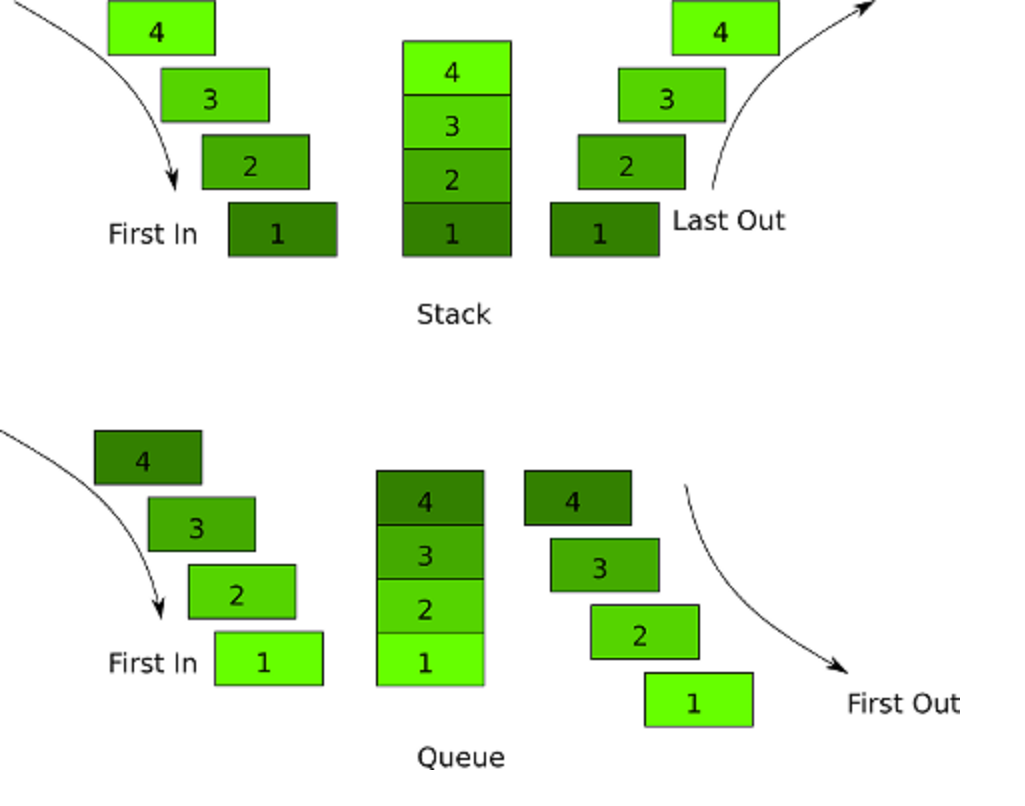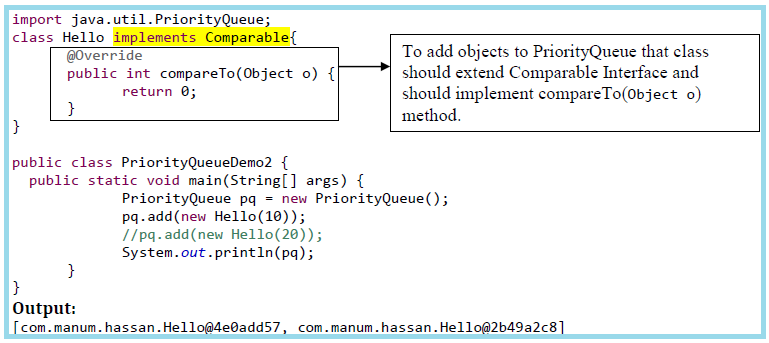

The PriorityQueue and LinkedList are the most common classes used for queues. Using the queue, elements are added to the end of the list and deleted from the start of the list. Queues follow the first in, first out (FIFO) method of organization. When working with a Java Stack, you can use the basic "push" and "pop" operations to move elements in and out, but you can also use search, empty, and peek to manage the elements. This structure follows a last in, first out (LIFO) approach, so the most recent element is at the top of the stack. Imagine that each element is literally being stacked one on top of another, and you understand the stack data structure. Lastly, the "head node" (generally the first element in the list) is the key, and you'll lose the entire list if you lose that. Just remember, you're giving up random access, which can cause problems. You can easily insert and delete new elements as you need, and the memory allocation for a Linked List is much more efficient than with an array. All in all, you might use arrays if you need to store things linearly and especially if you need to search the elements frequently. Lastly, arrays store elements on contiguous memory, which requires special allocation. Plus, a lot of the array is wasted if capacity and occupancy change over time. You may also avoid arrays because it's hard to add and delete elements once the array is made.

The array can also be sorted using techniques like quick sort or merge sort, but the biggest downside is that the size of the array is fixed. With this data structure, you can access elements at random using the index. An array is a linear data structure, or "list," where elements are stored. ArraysĪrrays represent one of the simplest types of data structure in Java. The downside is that linear data structures can become resource-intensive to search in large datasets. There is one first element, one last element, and every element in between has a "next" and "previous." The following data structures are all linear, which means elements are sorted and searched sequentially, one after the other. Since choosing the right data structure in Java is crucial to efficiency and speed, let's break down all of your options and when you might use what in this quick Java tutorial.
Java basic data structures queue software#
With that said, the data structure in Java can be done in many ways, and it can be confusing for beginners and seasoned software developers alike. It is high-level and object-oriented, and a Java program can be run infinitely on any platform that supports Java because it follows the "Write Once Run Anywhere" (WORA) principle. Java is one of the most popular programming languages. These data elements (data structures) provide an efficient way of storing and organizing data in the computer making possible utilizing them more efficiently. Data structure defines how data is organized, managed, and stored.


 0 kommentar(er)
0 kommentar(er)
